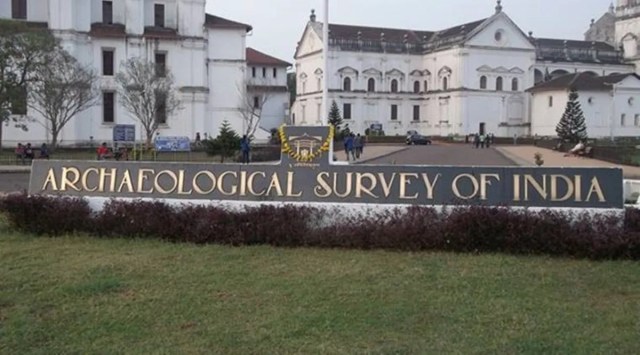IN THE first such largescale exercise in decades, the Archaeological Survey of India (ASI) has put out a list of 18 centrally protected monuments which it wants to delist as, according to the central agency, they no longer hold national importance.

The monuments facing delisting include Kos Minar No.13 at Mujessar village in Haryana; Bara Khamba Cemetery in Delhi; Gunner Burkill’s Tomb at Rangoon in Jhansi; Cemetery at Gaughat in Lucknow; and Telia Nala Buddhist ruins, which form part of a deserted village in Varanasi, Uttar Pradesh.
Delisting of the monuments effectively means the central agency won’t have any onus to protect them, and activities related to construction and urbanisation in the area can be carried out in a regular manner.
Currently, the ASI has 3,693 monuments under its purview, which will fall to 3,675 once the delisting exercise is completed in the next few weeks.
According to an official gazette notification dated March 8, published last week, the ASI has invoked Section 35 of the Ancient Monuments and Archaeological Sites and Remains Act, 1958 (AMASR Act) to delist the 18 monuments, stating that these “have ceased to be of national importance”.
“In exercise of the powers conferred by section 35 of AMASR Act, the Central Government hereby gives notice of its intention to declare that the monuments specified in the Schedule to this notification have ceased to be of national importance for the purposes of said Act,” the notification said, inviting “objections or suggestions” from the public within two months.
Story continues below this ad
Under the AMASR Act, monuments of national importance are to be conserved and maintained by the ASI as an important site pertaining to history and culture, and any kind of construction-related activity is not allowed around the protected site.
On December 8 last year, the Ministry of Culture had told Parliament that 50 of India’s 3,693 centrally protected monuments have gone missing. This submission was made as part of a report titled ‘Issues relating to Untraceable Monuments and Protection of Monuments in India’ submitted to the Parliamentary Standing Committee on Transport, Tourism and Culture.
The missing monuments included 11 in Uttar Pradesh, as well as two each in Delhi and Haryana. It also included monuments in Assam, West Bengal, Arunachal Pradesh and Uttarakhand.
According to the ASI, which is under the Ministry of Culture, 14 of these 50 monuments were lost to rapid urbanisation, 12 submerged by reservoirs or dams, and 24 remain untraceable.
Story continues below this ad
The 18 monuments to be delisted come from the list of 24 monuments that remain untraceable.
It was in 2013 that the Comptroller and Auditor General (CAG) had declared 92 monuments as “missing” after a first-of-its-kind physical verification exercise undertaken after Independence. Out of these 92 “missing” monuments, the ASI said, 42 were later identified, while giving the break-up of the remaining 50 monuments under those affected by urbanisation, reservoirs/dams and those which remain untraceable.
The House panel had come down heavily on the distinction regarding the lost monuments as “an academic distinction since monuments lost to urbanisation/reservoirs are also irrecoverable”.
The move to delist the 18 monuments comes nearly five months after the parliamentary panel observed that the list of ASI-protected sites includes a large number of “minor monuments” and recommended that it should be “rationalised and categorised” on the basis of their national significance, unique architectural value and specific heritage content.









